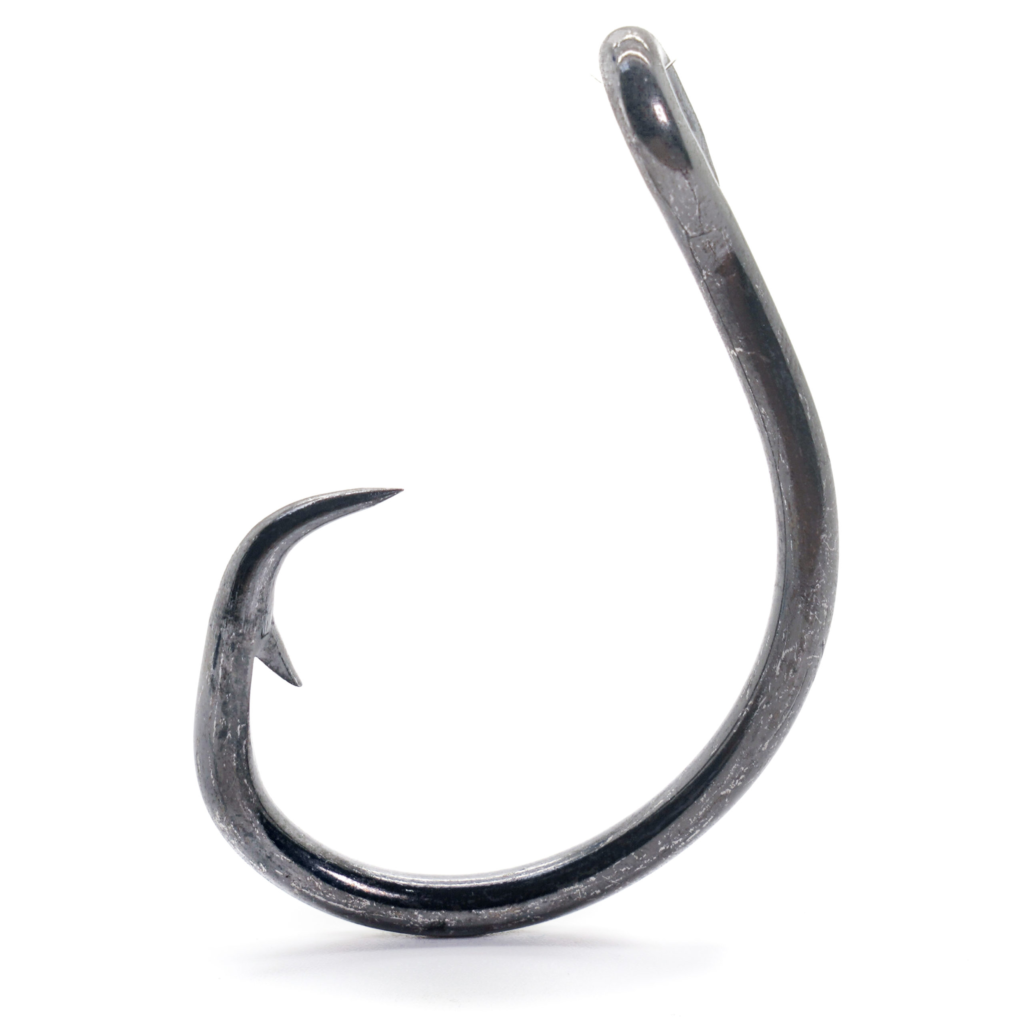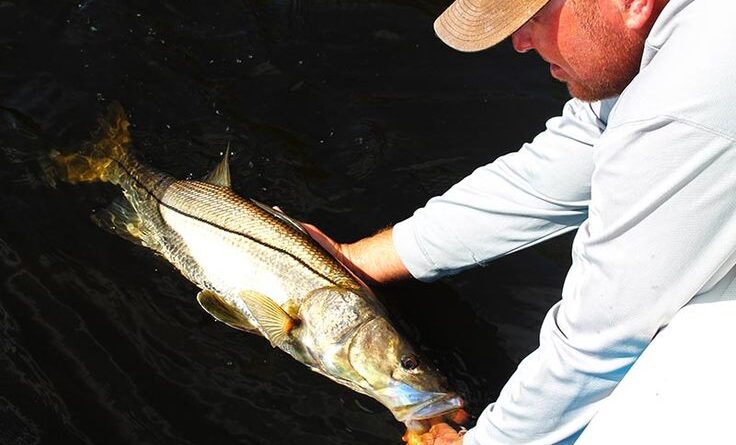Circle Hooks vs. Regular Hooks: Fishing is an age-old pursuit that connects people with nature and provides endless opportunities for adventure and relaxation. Whether you’re an experienced angler or new to the sport, one of the most crucial choices you’ll face is selecting the right hook. Among the various types available, circle hooks and regular hooks, also known as J-hooks, are often at the center of debate. This guide will delve into the primary differences between these two hook types, examining their respective benefits and drawbacks. By the end, you’ll have a clearer idea of which hook is best suited for your fishing style and target species.
Circle hooks are designed with a unique circular shape, where the point curves inward towards the shank. This design reduces the risk of gut-hooking fish, making them a popular choice for catch-and-release fishing. Circle hooks often lead to more successful hook sets, as they tend to lodge in the fish’s lip or corner of the mouth, minimizing harm. They are ideal for saltwater fishing and are favored in many tournaments because they help ensure sustainable practices.
Regular hooks, or J-hooks, have a more traditional shape with a straight shank and a pronounced curve at the end. These hooks give anglers more flexibility in presenting bait, attracting those who favor active hooking techniques. With these hooks, fishers can exert precise control, making them a common choice in freshwater environments, like bass or trout fishing. However, they carry a higher risk of deep-hooking, which can be problematic for fish survival if you’re practicing catch-and-release.
At CheerfulFisherman.com, we are committed to providing valuable insights into fishing gear and techniques. In this article, we aim to answer a fundamental question every angler faces when choosing their hooks: Which type is right for you?
When you examine the unique qualities of circle hooks and regular hooks, you can make an informed decision for your next fishing trip. Let’s dive in and explore what each hook type has to offer, considering factors like your fishing environment, target species, and preferred fishing methods.

Understanding Hook Design
To fully appreciate the debate between circle hooks and regular hooks, it’s crucial to understand their distinct designs and how these designs affect their functionality.
Circle Hooks
Circle hooks feature a curved design where the point of the hook curves inward, almost forming a complete circle. This design causes the hook to rotate when pulled, typically leading to a hook set in the corner of the fish’s mouth. Circle hooks are known for their non-intrusive, fish-friendly nature, making them a popular choice among conservationists and catch-and-release anglers.
Regular Hooks
Regular hooks, commonly called J-hooks, have a more traditional shape, with a straight shank and a point that curves inward toward the shank. These hooks require the angler to set the hook with a quick pull or jerk, a common technique in sportfishing.

Key Differences Between Circle Hooks and Regular Hooks
To help you decide between circle hooks and regular hooks, let’s explore some key differences in their design, use cases, and impact on fishing outcomes.
Hooking Technique
- Circle Hooks: These hooks set themselves. When a fish bites and starts swimming away, the hook rotates and catches in the corner of the fish’s mouth. This self-setting feature eliminates the need for a sudden jerk or strong pull, reducing the risk of gut-hooking.
- Regular Hooks: Setting these hooks requires a firm and quick jerk of the rod to drive the hook into the fish’s mouth or body. This technique can be more challenging for beginners and increases the risk of injuring the fish, especially if it’s not timed correctly.
Applications
- Circle Hooks: Commonly used in catch-and-release fishing due to their lower risk of gut-hooking. They are ideal for species with large mouths or those prone to deep-hooking, such as catfish, tarpon, and striped bass. Circle hooks are also popular in live bait fishing, where fish tend to swallow the bait whole.
- Regular Hooks: Favored in sportfishing and competitive scenarios, where quick hook sets are crucial. They are often used in lures and artificial bait fishing, where immediate hook setting is required to secure the fish.

Conservation and Fish Welfare
- Circle Hooks: Widely recognized for their conservation benefits. The design minimizes harm to fish, reducing mortality rates, particularly in catch-and-release scenarios. Many fisheries management organizations recommend or require circle hooks to promote sustainability.
- Regular Hooks: While effective, these hooks pose a higher risk of gut-hooking, leading to increased fish mortality. They can cause more internal damage, making them less ideal for catch-and-release fishing.
Catch Rates
- Circle Hooks: Studies show that circle hooks have higher catch rates for specific species, especially those known to take bait deeply. Their self-setting nature often results in a higher percentage of fish being caught securely.
- Regular Hooks: These hooks are favored for their versatility and effectiveness in various fishing techniques. While they require more skill in setting the hook, experienced anglers often achieve excellent catch rates.
Ease of Use
- Circle Hooks: Ideal for beginners and young anglers due to their self-setting design. The reduced need for precise hook-setting technique makes fishing more accessible and enjoyable.
- Regular Hooks: Require more skill and experience to use effectively. The need for proper hook-setting technique can be a challenge for newcomers.

When to Use Circle Hooks
Circle hooks are gaining popularity among anglers who prioritize fish welfare, conservation, and catch-and-release practices. Here’s when you might consider using circle hooks:
Catch-and-Release Fishing
Circle hooks are the go-to choice for catch-and-release scenarios. Their unique design significantly reduces the risk of gut-hooking, ensuring fish can be safely released with minimal harm. This is especially crucial when targeting species with conservation concerns.
Fishing with Live Bait
When using live bait, circle hooks are particularly effective. Fish that swallow bait whole tend to get gut-hooked when you use regular hooks. However, circle hooks can reduce this risk because they rotate and catch in the corner of the mouth.
Targeting Large-Mouth Species
Species with larger mouths, such as catfish, tarpon, and striped bass, tend to take bait deeply. Circle hooks are designed to catch these species effectively without causing internal damage.
Inexperienced or Young Anglers
For beginners or young anglers, circle hooks provide a forgiving and effective option. The self-setting design removes the pressure of timing the hook set correctly, making fishing more accessible and enjoyable.

When to Use Regular Hooks
Regular hooks, despite their higher risk of gut-hooking, remain popular in various fishing contexts. Here’s when you might choose regular hooks:
Sportfishing and Competitive Fishing
In competitive environments, quick hook sets are essential. Regular hooks allow for fast and precise hook-setting, a crucial skill in tournaments and competitive angling.
Artificial Bait and Lure Fishing
When using artificial bait or lures, regular hooks are more effective. Anglers can quickly set the hook upon feeling a bite, securing the fish without hesitation.
Experienced Anglers
Experienced anglers who are confident in their hook-setting technique often prefer regular hooks for their versatility and control. The ability to set the hook with precision is a valuable skill in many fishing scenarios.
Targeting Species with Smaller Mouths
Regular hooks can effectively catch species with smaller mouths or those that are less likely to swallow bait whole. This reduces the risk of gut-hooking while allowing for quick hook sets.

Maximizing Your Fishing Adventure: Tips for Using Circle Hooks and Regular Hooks
Regardless of whether you choose circle hooks or regular hooks, there are essential tips to keep in mind to enhance your fishing experience and ensure fish welfare.
Choosing the Right Hook Size
Select a hook size that matches your target species and bait type. Hooks that are too large or small can lead to reduced catch rates and increased risk of gut-hooking.
Proper Baiting Technique
Secure the bait firmly onto the circle hook, keeping the hook point clear to allow for proper rotation. For regular hooks, ensure the bait allows for quick hook-setting without interference.
Using the Right Gear
Choose fishing gear that complements your chosen hook type. Circle hooks work well with softer rods and reels with smooth drag systems. Regular hooks require stiffer rods and reels with responsive drag settings.
Practicing Patience
With circle hooks, patience is key. Allow the fish to swim away with the bait before reeling in. This ensures the hook sets properly in the fish’s mouth. With regular hooks, be ready to set the hook quickly when you feel a bite.
Following Local Regulations
Some regions have specific regulations regarding hook types. Be sure to check local fishing laws and guidelines to ensure compliance with conservation efforts.
Practicing Catch-and-Release Responsibly
If you plan to release your catch, handle fish with care. Use wet hands or a rubberized landing net to avoid damaging fish scales. Gently remove the hook, and if you find the fish deeply hooked, consider cutting the line near the hook to reduce harm.
Conclusion: Circle Hooks vs. Regular Hooks
Choosing between circle hooks and regular hooks ultimately depends on your fishing goals, target species, and experience level. Circle hooks excel in catch-and-release fishing, live bait scenarios, and when targeting large-mouth species. Their self-setting design promotes fish welfare and reduces mortality rates. Regular hooks are ideal for sportfishing, competitive fishing, and artificial bait techniques, offering versatility and precision.
By understanding the key differences, advantages, and disadvantages of each hook type, you can make an informed decision that aligns with your fishing style and conservation values. I hope you enjoy thrilling and successful fishing adventures, whether you choose the conservation-friendly circle hooks or the versatile regular hooks. Happy fishing!






